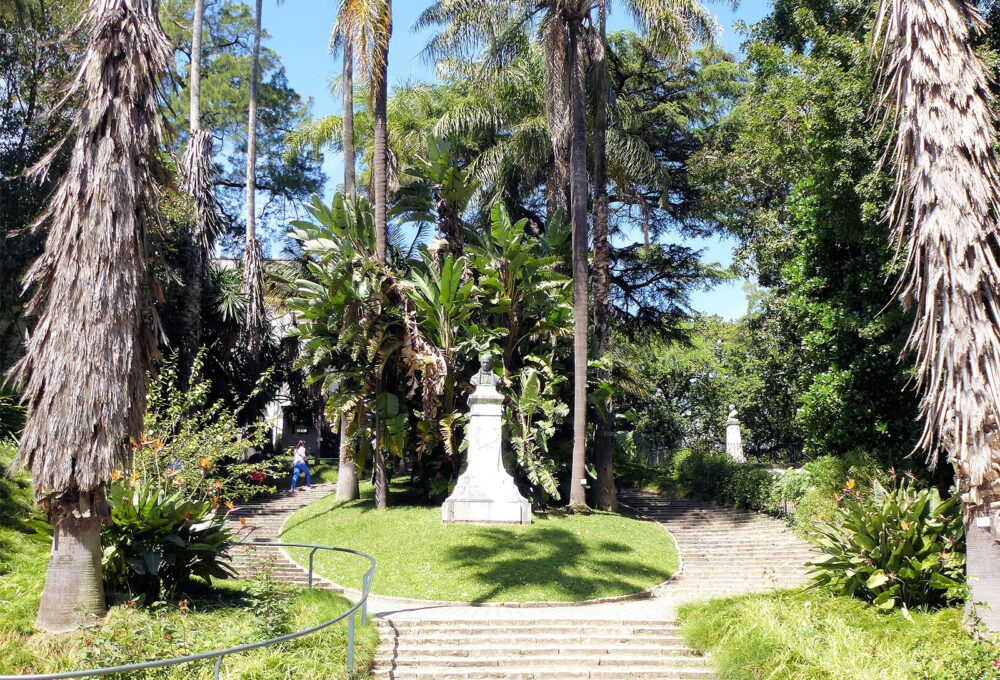Jardim Botânico de Lisboa
Praças e Jardins / Príncipe Real
Where History and Nature Merge
In the heart of Lisbon lies a garden surrounded by a calm of smells and sounds that diverge from the usual frenzy of the city. In the midst of four hectares of bifurcated paths, flower beds and terraces joined by lakes and waterfalls, we find the Lisbon Botanical Garden, home to around 1500 different species and inaugurated in 1878. Right in the center of Príncipe Real, the garden is divided by Class and Arboretum. The first, currently closed, includes the library, the herbarium and the Lago de Cima (Upper Lake). The Arboretum, at the bottom of the garden, hosts large trees and other plants. Between the upper and lower parts of the Arboretum, temperatures can vary from two to three degrees centigrade, which is why the upper part is home to species from hot and dry climates, and the lower part to those that require more humidity. Next to the garden we can also find the National Museum of Natural History and Science, with a collection of almost one million copies. Here we can discover important natural history collections, such as botany, mineralogy, paleontology, zoology and anthropology, in addition to several temporary exhibitions. Fertilised by the rich passing of history, there are several episodes that adorn the garden's more than 140 years of life. It was here that Mário Soares would give one of his first speeches after returning to Portugal following exile. Legend also says that the marks on the statue of Bernardino Gomes, and on the palm trees around it, came from stray bullets during the military uprisings of 1927. The space even houses authentic living fossils such as cycads, a landmark of ancient and mostly extinct floras. This species, however, is not alone in this category. The botanical garden is one of six with a live specimen of the Chrysophyllum imperiale (known as the Emperor's tree in Portuguese), which is also endangered. As they share the same title, it was allegedly presented to the first director of the garden, Count of Ficalho, by the Emperor of Brazil. Since there is a record, this species has borne fruit only once, with its seeds in the garden's seed bank. The scientific garden complements the teaching and botanical research at the Polytechnic School. Implemented in Monte Olivete, the space had more than 200 years of botanical research already through the Jesuit College of Cotovia, in operation between 1609 and 1759. The project originated in 1843, however, only in 1873, thanks to the teachers Conde de Ficalho and Andrade Corvo, did the garden planting begin. The diverse flora was chosen by the German E. Goeze and the French J. Daveau, its first gardeners. The plants came from the four corners of the world with territories under Portuguese rule, a testament, at the time, to the weight of the country as a colonial power vis-à-vis Europe. In 2010, it was classified as a National Monument, and currently, the garden exudes a tropical aura, mainly due to the variety of palm trees, but also thanks to species from New Zealand, Australia, China, Japan and South America.
. . . .
. . . . .
. . . . . .
Informations
 Rua da Escola Politécnica 56 58
Rua da Escola Politécnica 56 58 1250-102 Lisboa
1250-102 Lisboa Monday to Sunday from 10h to 17h
Monday to Sunday from 10h to 17h
Zone




